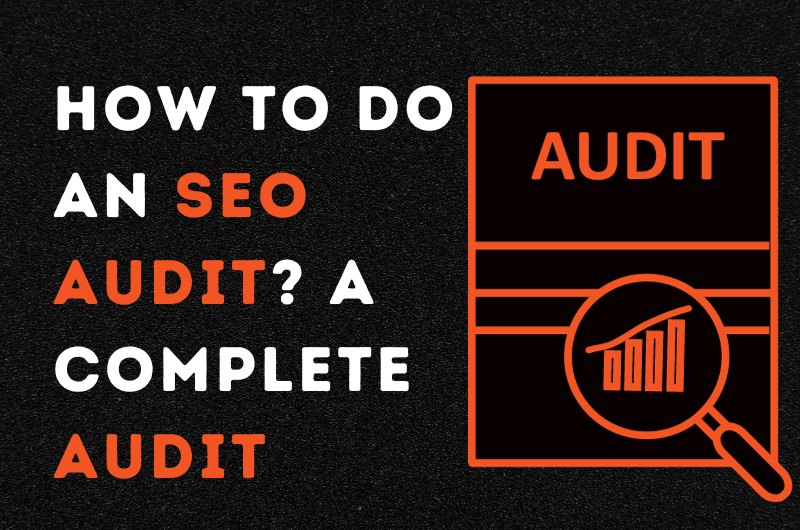Are you looking for a guide on how to do an SEO audit? Look no further, because we are here with a basic guide you can use as a beginner.
If you are operating a website for your business or any other purpose, you must have come across this term by now: SEO Audit. It is a term that everyone tells you to focus on because it is crucial. Yet, if you are a beginner and have no technical expertise, you will struggle to comprehend what an SEO audit is. You will be left wondering how to do an SEO audit as your business crumbles.
But don’t we understand that an SEO audit is a challenge for many beginners? That’s why in this blog we will tell you what an SEO audit is and which tools you can use. Next, we will guide you on how to do an SEO audit in five easy steps. Let’s begin!
Click here to learn about the best SEO agency in London!
What is an SEO Audit?
An SEO audit is a comprehensive analysis of your website to pinpoint SEO problems. It helps you identify the problems that are holding back your website. In other words, it tells you what needs to be changed on your website to get a higher ranking. An SEO audit involves identifying the problems, optimising your content, and building backlinks. But more on that later.
Which SEO Tool is Used for SEO Audit?
Before we learn how to do an SEO audit, let us learn about some tools that are often used to conduct an SEO audit. Some of these options are completely free, while others require will have to pay.
1. Google Search Console
Google Search Console is a tool that Google provides you with for free to analyse and monitor your website. You can use this software for multiple purposes, such as identifying problems and monitoring your keyword ranking. However, it can be a bit difficult to use if you do not have the right experience.
2. Semrush
Semrush is another widely used tool by businesses, but it is not free. Unlike the previous tool, Semrush provides you with features to carry out a site audit. In addition, it also provides you with numerous other features for key keyword research and competitor analysis.
3. Ahrefs
Another subscription-based tool is Ahrefs, which provides the user with a ready-to-use feature. Ahrefs also provides you with numerous different tools, such as a backlink analysis feature. However, it is popularly known for its SEO audits.
4. Get a Free Site Audit with Our Help
If you do not have the SEO expertise to manually conduct an SEO audit and do not want to pay for subscriptions, then reach out to us. We at SEO Syrup provide our clients with a free SEO audit with the help of our seasoned SEO experts.
Click here to get a free SEO audit now!
How to Do an SEO Audit in 5 Easy Steps
If you had no idea what an SEO audit was, you might have built up a good understanding by now. There is a lot more, but it cannot be covered in just one blog. Now, let’s move on to the next part and learn how to do an SEO audit in five easy steps.
1. Define Your Objectives
Before you make any changes to your website, you should have a clear vision of how you want to approach a task. Therefore, make sure that you have clear objectives that you want to achieve with an SEO audit. A valid and measurable objective is to increase your website traffic by a certain number.
2. Analyse Your Current Performance
Next on our SEO audit guide is to analyse your current performance. Analyse the different important metrics and see how your website is performing. This includes checking the website traffic, ranking, and backlink profile. By doing this, you will know what areas you can improve.
3. Identify Technical Issues
Technical issues are a big problem that needs to be resolved when you conduct an SEO audit. These problems include broken links, orphan pages, or missing alt text. Make sure you identify these problems, as they can lower your SEO ranking.
4. Optimise Your Content
Once you have a good understanding of what is wrong with your website, you need to start optimising your content. Make sure that you are updating the posts that are performing poorly by incorporating the right keyword. In addition, write high-quality content and replace the text that is ambiguous.
5. Build Backlinks to Your Website
Your job is not done yet; in the last step, you need to build backlinks to your website. A backlink is a link that is placed on a third-party website to redirect the audience to your website. Reach out to bloggers and credible websites for guest posts to gain backlinks.
If you are looking for a reliable SEO partner, contact us!
The Crux
In this blog, we taught our readers how to do an SEO audit. The process starts with defining objectives and analysing your website. Next, you should identify and resolve technical issues while optimising your content. Lastly, reach out to different credible websites to gain backlinks to enhance your credibility.
We at SEO Syrup understand that an SEO audit can be hard; therefore, we provide you with a team of seasoned SEO experts at affordable rates. Click here to get an instant quote!



